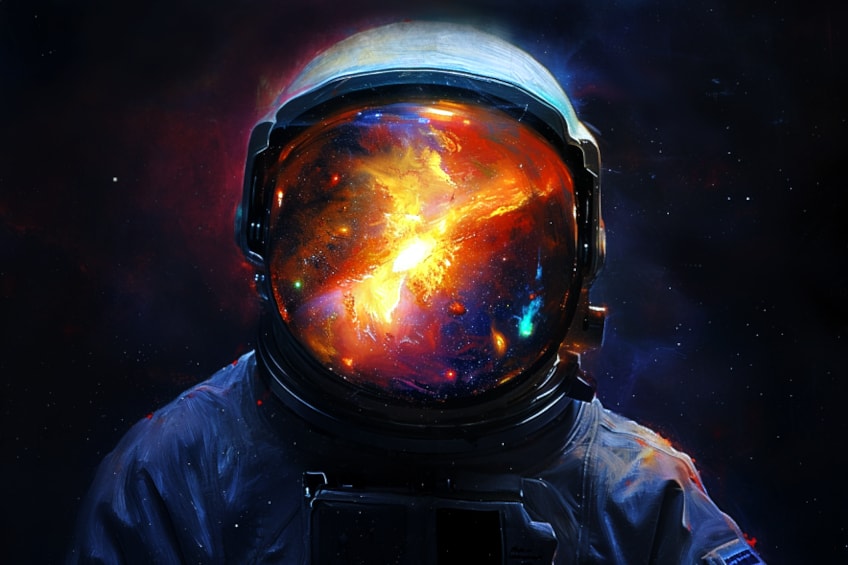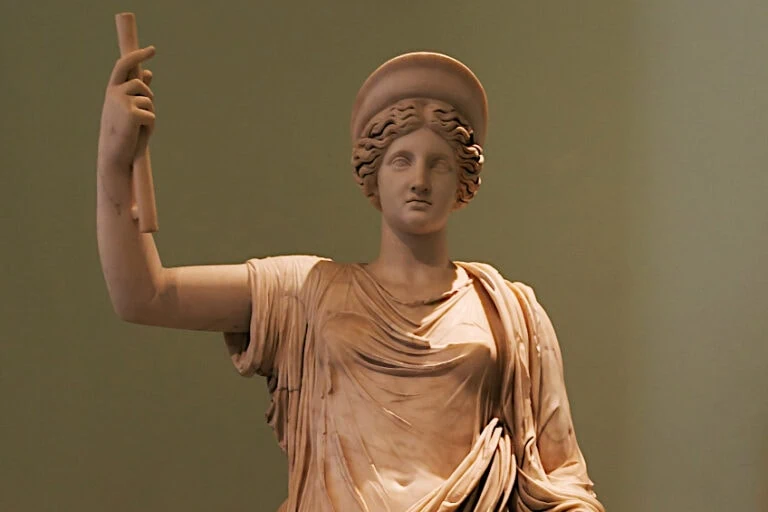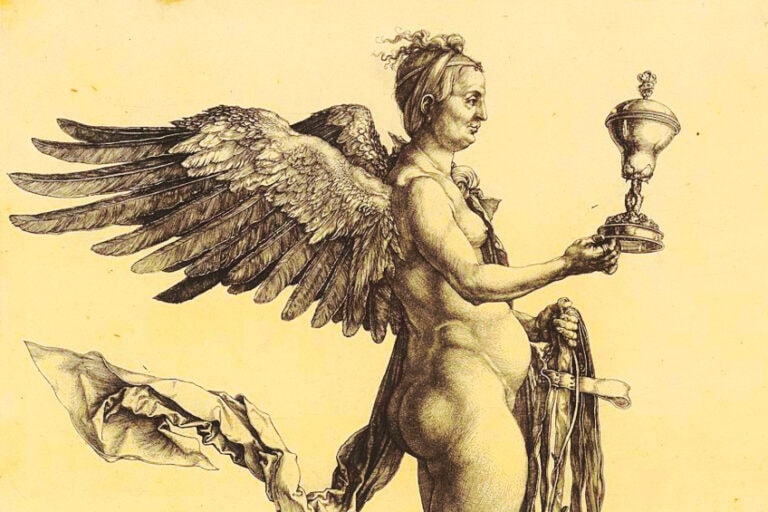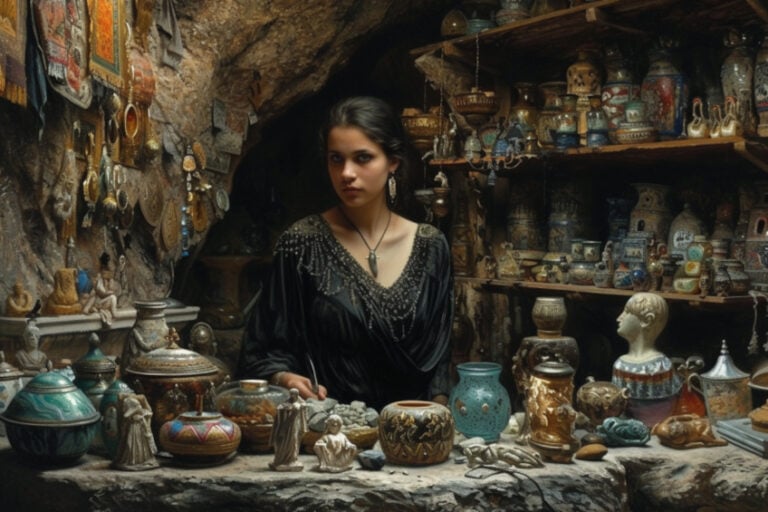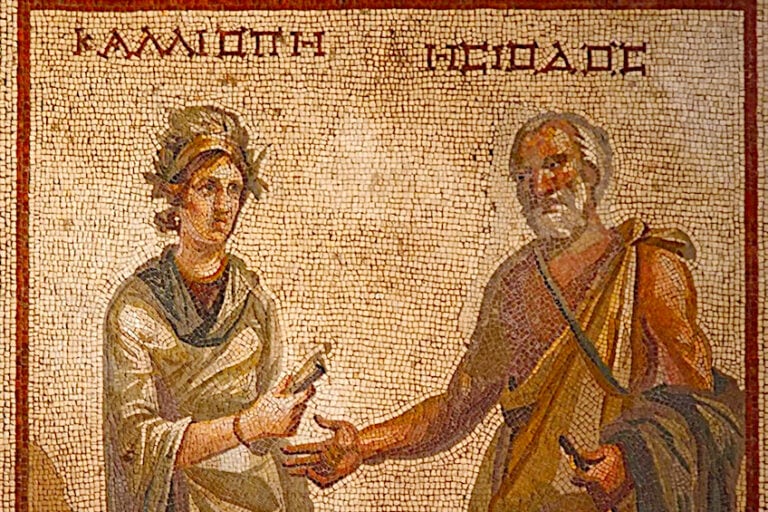Greek God Hyperion – The Primordial Source of Light
All cultures have answers to where the heavenly bodies that light up the heavens and earth came from. The ancient Greeks place that origin at the feet of the Titan Hyperion. The Greek god Hyperion was believed to hold domain over heavenly light, and was the father of the celestial trio of gods who light up the sky as the sun, moon, and dawn. Come investigate with us the background and theories surrounding the ancient Titan Hyperion in Greek mythology.
Contents
The Greek God Hyperion, Lord of Heavenly Light
| Name | Hyperion |
| Gender | Male |
| God of | Heavenly light |
| Personality | Dignified and wise |
| Symbols | Light |
| Consorts | Theia |
| Children | Helios, Selene, and Eos |
| Parents | Gaia and Uranus |
Hyperion is a distant and mysterious figure of the ancient Greeks’ mythic history. He mostly serves as an origin point for the Earth’s celestial gods who light up the sky dome. He is mentioned very sparingly in myth and writings, and his exact connections to heavenly light are vague.
He is a peripheral character known largely through connection with his children, the sun, moon, and dawn. Most notably Hyperion and his wife Theia are considered the origin of mankind’s eyes and sense of sight.
The God of Light’s Background
The name Hyperion is taken to mean “he that walks on high” or “the god above”. He is often joined with his son Helios and in some writings the name is used to refer to both of them. He may have been referred to in Mycenaean Greek, in Linear B on a tablet, however, the same name has been argued to read as “Apollo”. This is interesting as Apollo is a sun god who is thus also mentioned in connection with Helios and inherited much of the Titan of the sun’s sphere.
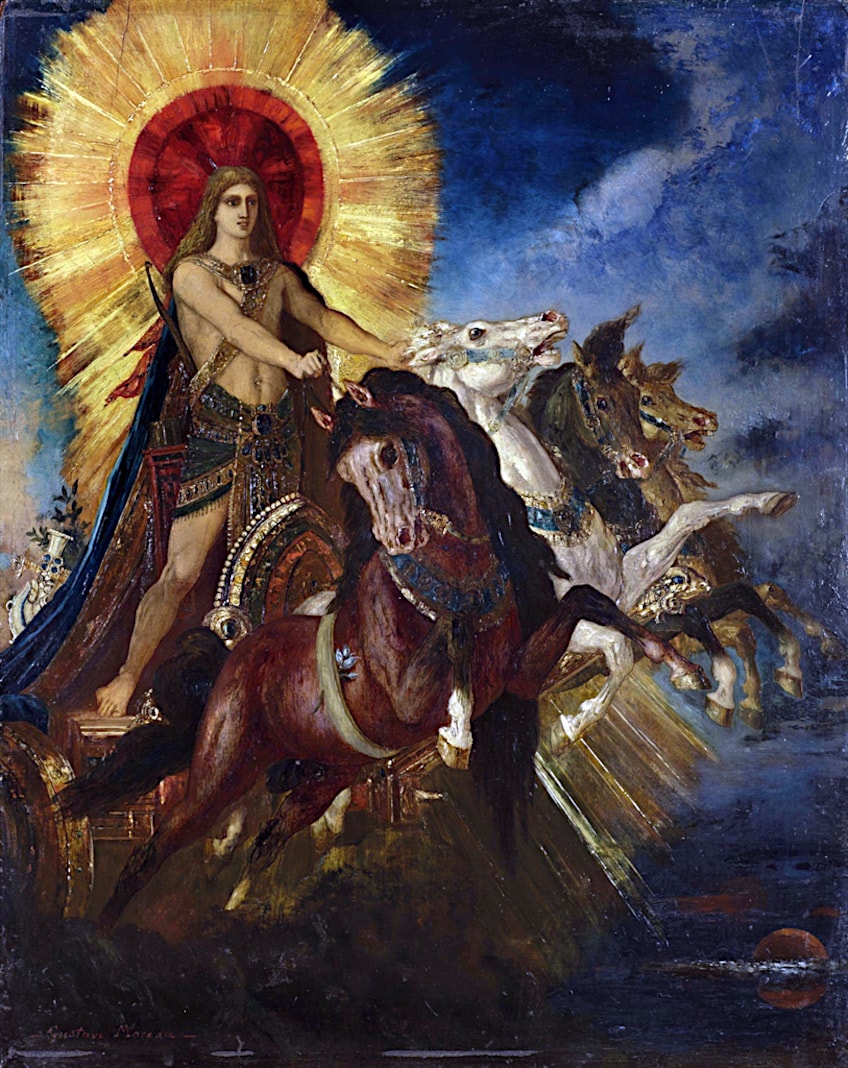 The Chariot of Apollo or Phoebus Apollo by Gustave Moreau (c. 1880); Gustave Moreau, Public domain, via Wikimedia Commons
The Chariot of Apollo or Phoebus Apollo by Gustave Moreau (c. 1880); Gustave Moreau, Public domain, via Wikimedia Commons
As with many Titans Hyperion was one of those in power in the Golden Age of Titan rule before the Titanomachy and their dethronement. He was suggested to be one of the four pillars of the earth, upholding the sky in the East, and the architect of mankind’s sense of sight during their creation. His role as a bearer of the heavens may be one of the aspects of cosmogony adapted from the Near East and afforded to the Titans, who fulfill the role of ‘what came before’.
His son Helios and daughter Selene are also two of the only gods other than Zeus to have clear Proto-Indo-European origins.
Familial Relations of Hyperion
Hyperion belongs to the group of original Titans, consisting of the children of the primordial pairing of Gaia, the earth, and Uranus, the sky, as listed in Hesiod’s Theogony (8th-7th century BCE). His siblings also include the groups of the Cyclopes, the Hecatoncheiries, the Gigantes, the Erinyes, the Meliae, and myth provides him with many half-siblings as well, such as Aphrodite and Python.
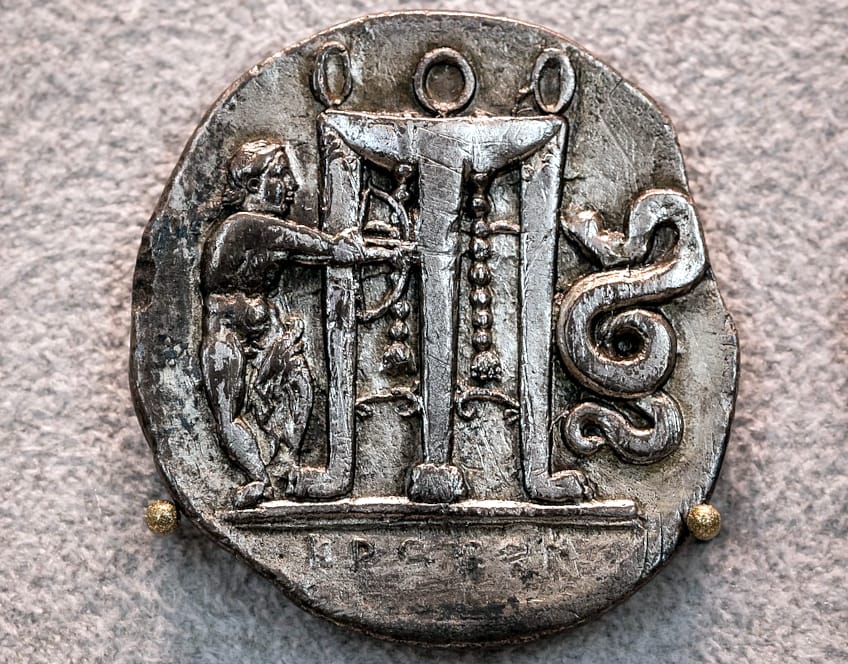 Silver coin from Croton showing Apollo killing Python with the Delphic tripod in between (425-350 BCE); ArchaiOptix, CC BY-SA 4.0, via Wikimedia Commons
Silver coin from Croton showing Apollo killing Python with the Delphic tripod in between (425-350 BCE); ArchaiOptix, CC BY-SA 4.0, via Wikimedia Commons
The Titan Hyperion took to wife his sister the Titaness Theia, the shining goddess of light and sight also known as “wide-shining” Euryphaessa or Aethra. She is his only known consort and Hyperion is most well-known through his children with her. He fathered one son, Helios the son god, and two daughters in Selene, the moon goddess and Eos, the dawn.
The Role and Significance of the Titan Hyperion
As the gods are taken as embodying natural phenomena, the Titans’ roles are dually that of genealogy and cosmogony.
Hyperion fulfills this role as both a son of the sky and the father of the heavenly lights of the sun, moon, and dawn.
The Titan of the East
The Titan sons of Gaia, excluding Oceanus, overthrew Uranus who was imprisoning any children Gaia bore him. They caught him unawares, held him down while Kronus castrated him, and helped establish his brother’s rule over the world from Mount Orthys.
Hyperion and his brothers thus ruled the earth in high places of esteem.
Hyperion was believed to be the eastern of the four pillars who held up the heavens, the other three going to Iapetos, Krios, Koios. Iapetos got the west, Krios held the south, and Kios the north.
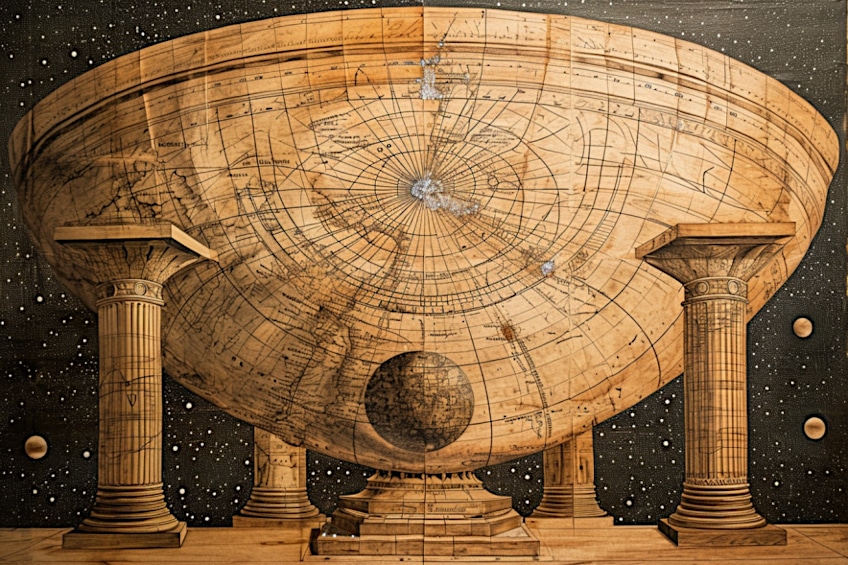 Hyperion as pillar of the world; artist’s impression
Hyperion as pillar of the world; artist’s impression
The east was where the celestial light siblings returned each day and night and where Helios’ palace, where he resided with his mother Theia and his family, was rumored to be. As the father of the sun, moon, and dawn who lit up the heavens and earth he is also suggested as the one who established them and thus brought order to the day-night cycles.
Hyperion’s Contributions to the World
He and his sister-wife Theia’s connections to heavenly light also lend to the suggestion that they were the ones who created mankind’s ability to see. Supposedly in one myth Hyperion and his three pillar brothers were entrusted with helping to create humanity, particularly their senses. The ancient Greeks believed our eyes shone invisible beams of light like the sun and allowed us to see objects the beams fell upon.
It is no wonder then that the sky god of heavenly light whose name means “he who watches all” and was one of the ruling Titans would be seen as having a hand in creating mankind and specifically the illuminating gift of sight.
It is perhaps through light and the solar and lunar cycles connecting to time and seasons that he is suggested to have ordered the stars and season cycle as well, however, this role is associated with his brother Krios. He is also ascribed by some as observing and figuring out the moon Selene’s effect on Oceanus and the tides, the knowledge having helped the sea-faring ancient Greek people, though this may simply be an extrapolation from his knowledge of his children.
Hyperion in Literature
The Greek god Hyperion has little to no cult of worship or surviving literature outside of listings of the Titans and their cosmic roles. His domain and distance to the events of myth mean he has little known descriptors, representations, or symbols ascribed to him. While there is no defined symbol of Hyperion, he may have been represented with rays of light or a nimbus similar to his son Helios and daughter Selene. It is unknown if there ever was any item or place that was considered as a symbol of Hyperion at all.
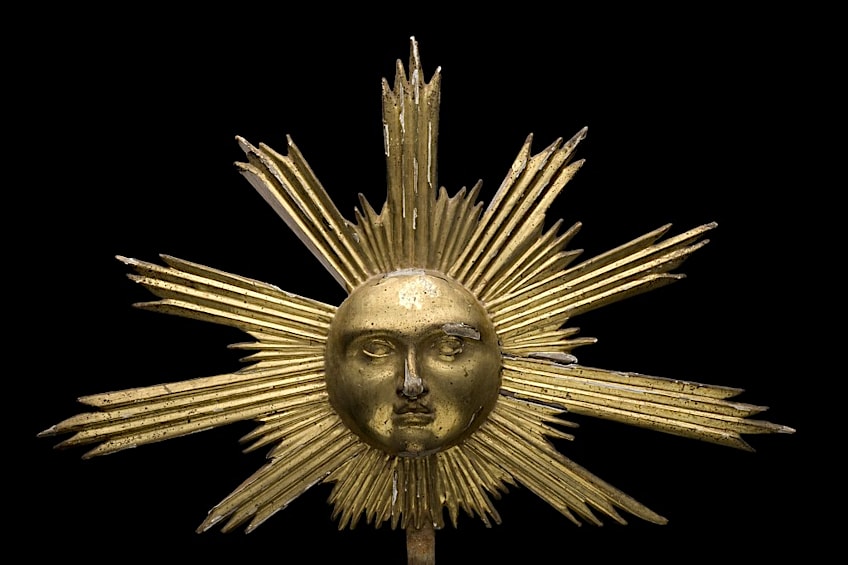 Gilt wood apothecary sign in the shape of Apollo with a solar nimbus (1701-1900); See page for author, CC BY 4.0, via Wikimedia Commons
Gilt wood apothecary sign in the shape of Apollo with a solar nimbus (1701-1900); See page for author, CC BY 4.0, via Wikimedia Commons
We know very little about him other than his role in overthrowing Uranus and establishing his brother Kronos’ rule. It is commonly presumed he had some role in fighting the Olympians in the Titanomachy and subsequent imprisonment in Tartarus, however, this is never actually referenced in any sources and remains mere speculation. We hear nothing about him post-Titanomachy and have little mention aside from him being Helios’ father.
This lack of information was not uncommon with the Titans, as their role was often simply to explain and justify concepts in the world.
Connections to Aether
It has been suggested that Hyperion, like most gods, inherited his ruling domain from the previous generation. Hyperion specifically is associated with the children of Nyx and Erebus, the primordials Aether, the god of the shining blue of the sky, and his sister-wife Hemera, the personification of the day. The two were considered to bring about the day-night cycle like their parents did before them, though this role was later subsumed by Hyperion.
Aether being the personification of the “shining blue ether” that sits between the sky dome and the airs bound to the earth, may have been associated with, or perhaps contributed to, Hyperion’s name of “he who watches all”, as the shimmering light covering the heavens would arc above the earth.
Hyperion’s domain of heavenly light and connection with Aether and Hemera may have served to explain the heavens being lit prior to the birth of the sun god Helios and his shining chariot, but this theory is unsubstantiated in myth or custom. His wife Theia is also known by the name Aethra, being the female form of the same god Aether.
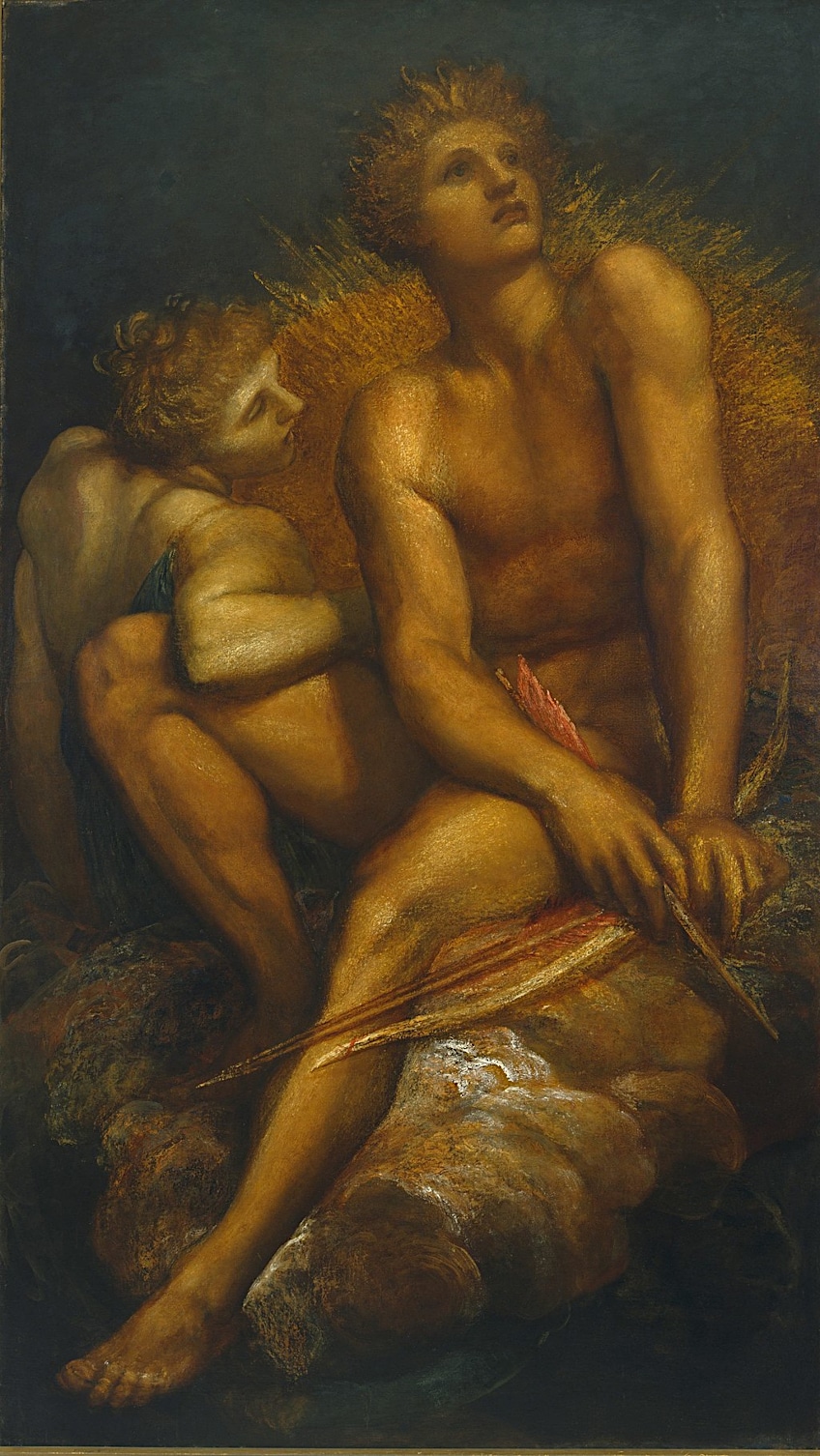 Artemis and Hyperion by George Frederic Watts (c. 1881); George Frederic Watts, Public domain, via Wikimedia Commons
Artemis and Hyperion by George Frederic Watts (c. 1881); George Frederic Watts, Public domain, via Wikimedia Commons
What Is Hyperion the God Of?
Hyperion alongside Theia is considered to be the sky’s heavenly light and connected with sight. Aside from his mythological role, in practice, he is by far most associated with, and remembered in relation to, his “bright son” Helios. He and his son Helios are distinct persons in early sources though they were occasionally both identified with the name Hyperion, possibly as title or alternate name for Helios.
An example of this is found in The Iliad and Odyssey (8th century BCE) call the younger sun god “Helios Hyperion”, either denoting his father being Hyperion or functioning as an epithet.
How this reflects any influence he had in Greek society is unknown. It has been suggested that Helios inherited his “all-seeing” attribute from his forgotten father. Helios being in the sky during the day constantly is what allowed him to witness Hades’ abduction of Persephone, and report on Aphrodite’s affair with the war god Ares to her husband Hephaestus. In light of both Helios’ role in myth, and Hyperion’s own connections to heavenly light and sight, it has been suggested that Hyperion’s domain also includes “watchfulness” as a heavenly observer of the world.
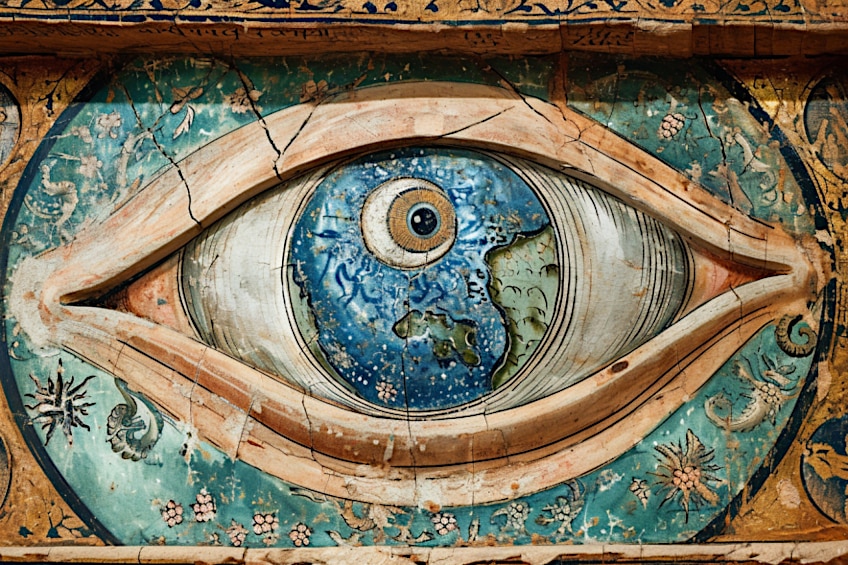 Hyperion as All-Seeing; artist’s impression
Hyperion as All-Seeing; artist’s impression
Diodorus Siculus’ (1st century BCE) rationalization of myth has him listed as the first person who understood and taught about the heavenly bodies of the sun and moon and their motions, and was thus considered their “father”.
Another of his writings has Hyperion be the father of Helios and Selene by his sister the Queen Basilleia, who inherited Uranus’ early throne after his joining the gods.
They married so that Basilleia would have heirs and were happy before him and his children were murdered by his brothers in envy and fear of the royal power he might gain over them. Even here he plays little role besides being Basilleia’s most beloved brother, as his wife and her heirs he fathered are the ones who are given godly honors by the people. His children’s names are given to the sun and moon, while his wife is given altars and held as a goddess, but Hyperion’s fate is not mentioned.
Hyperion After the Titanomachy
Hyperion is a defeated Titan that plays little part in mythology after he and his fellows were overthrown. We also do not know if Hyperion played a role in the Gigantomachy. Some sources hold that even if he was imprisoned in Tartarus after the events of the Titanomachy, Zeus later released them. His wife Theia is presumed present and fighting beside their son Helios in the Pergamon Altar, though currently no figure depicted in the frieze has been definitively identified as Hyperion.
 Detail from the frieze of the Great Altar at Pergamon showing Theia fighting the Giants (2nd Century BCE); Miguel Hermoso Cuesta, CC BY-SA 4.0, via Wikimedia Commons
Detail from the frieze of the Great Altar at Pergamon showing Theia fighting the Giants (2nd Century BCE); Miguel Hermoso Cuesta, CC BY-SA 4.0, via Wikimedia Commons
Hyperion is a god of light shrouded in the dark of mystery and is even more distant from us than his children. His role is a vital and intriguing one, as without him as a fundamental aspect the Greek world would be a much darker and chaotic place for humanity, however, he is by and large a minor character despite the grand allusions of his name.
Hyperion’s Legacy in the Modern Day
Hyperion has been featured in popular pieces of literature, particularly fiction. Hyperion most famously appears as the inspiration for some of John Keats’ and Friedrich Hölderlin’s poetic works, a character in the 2008 game God of War: Chains of Olympus, and novel series like Percy Jackson and the Olympians by Rick Riordan, and The Hyperion Cantos by Dan Simmons. Hyperion is used to refer to a moon, known as Saturn VII, which orbits the planet Saturn. Saturn itself is in turn named for the god Saturnus, who was the Roman mythology equivalent to Hyperion’s brother the Titan Kronos.
The Greek god Hyperion in Greek mythology is a link in the fascinating chain of how the ancient Greeks viewed and conceptualized the world around them. As a cornerstone in the cosmos, as we walk under a sky he holds up, that is lit by children he fathered, and seen through sight he gave us. While he may not have been popular or important in Greek life and mythology, he was no less influential in it. This character of intriguing mystery and lofty allusions has made him an inspiring figure in Greek representations of art and literature, and to us as well. Hopefully, we have lit your own interest in this god of light, and inspired you to dig further into his mystery.
Frequently Asked Questions
What Is Hyperion the God of in Greek Myth?
Hyperion is considered as a god of heavenly light and has many associations with the heavens. Known as high one and he who watches from above, he is the father of the sun, moon, and dawn personified, and he has come to be associated with the day-night cycle. He is also considered the source of celestial light, as well as mankind’s sense of sight beside his wife, Theia.
What Was the Role of the Greek God Hyperion?
The Titan Hyperion was one of the Titan brothers who overthrew Uranus and installed Kronos as king. He was one of the pillars of the earth upholding the sky and fathered the sun, moon, and dawn. It has been suggested that he is the one who ordered the day-night cycle and had a hand in giving humanity the sense of sight.

I am deeply passionate about history and am constantly fascinated by the rich and complex stories of the past. As the editor-in-chief of learning-history.com, I have the opportunity to share this passion with a wide audience through the creation and distribution of engaging and informative content about historical events, persons, and cultures. Whether it’s through writing articles and blog posts or creating videos or podcasts, I strive to bring the past to life in a way that is both accurate and enjoyable. My expertise in history, combined with my strong writing and communication skills, allows me to effectively communicate complex historical concepts and make them accessible and interesting to a wide range of readers. I am truly grateful for the opportunity to share my love of history with others through my work on learning-history.com.

